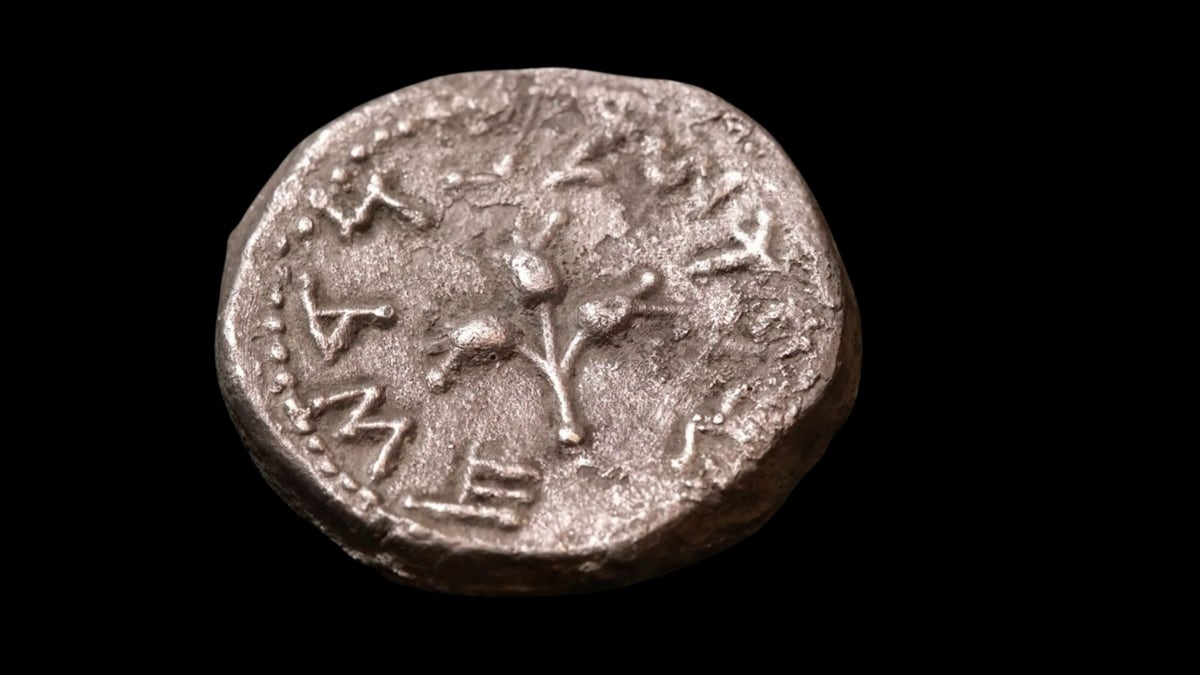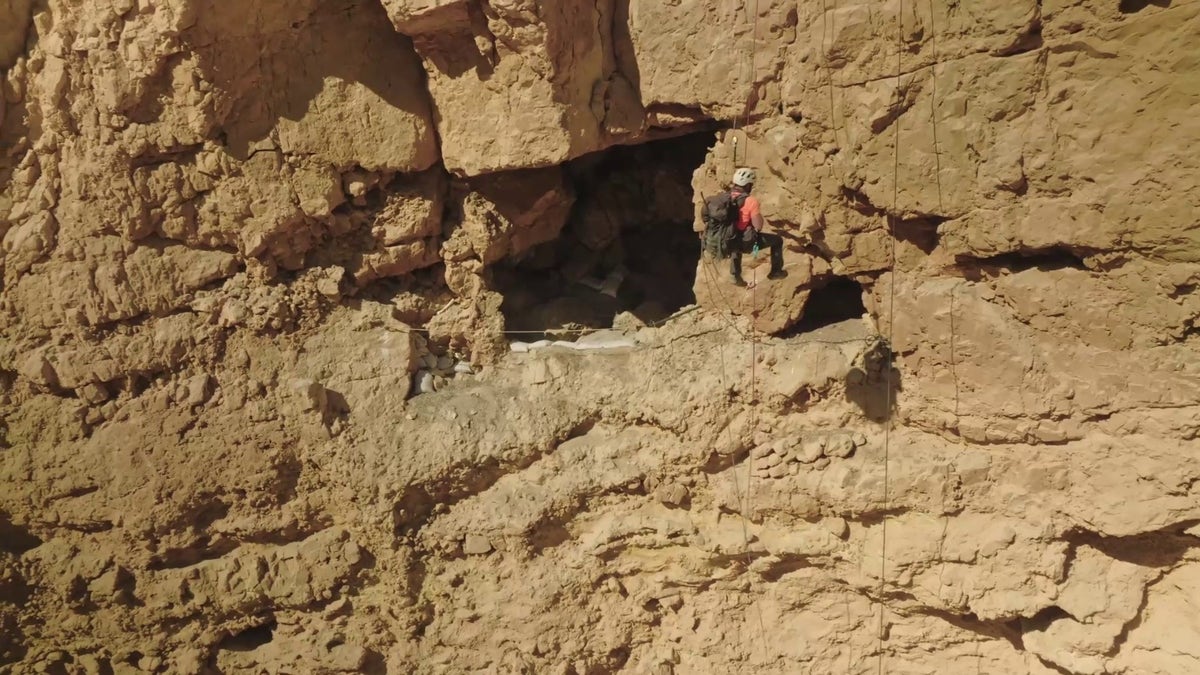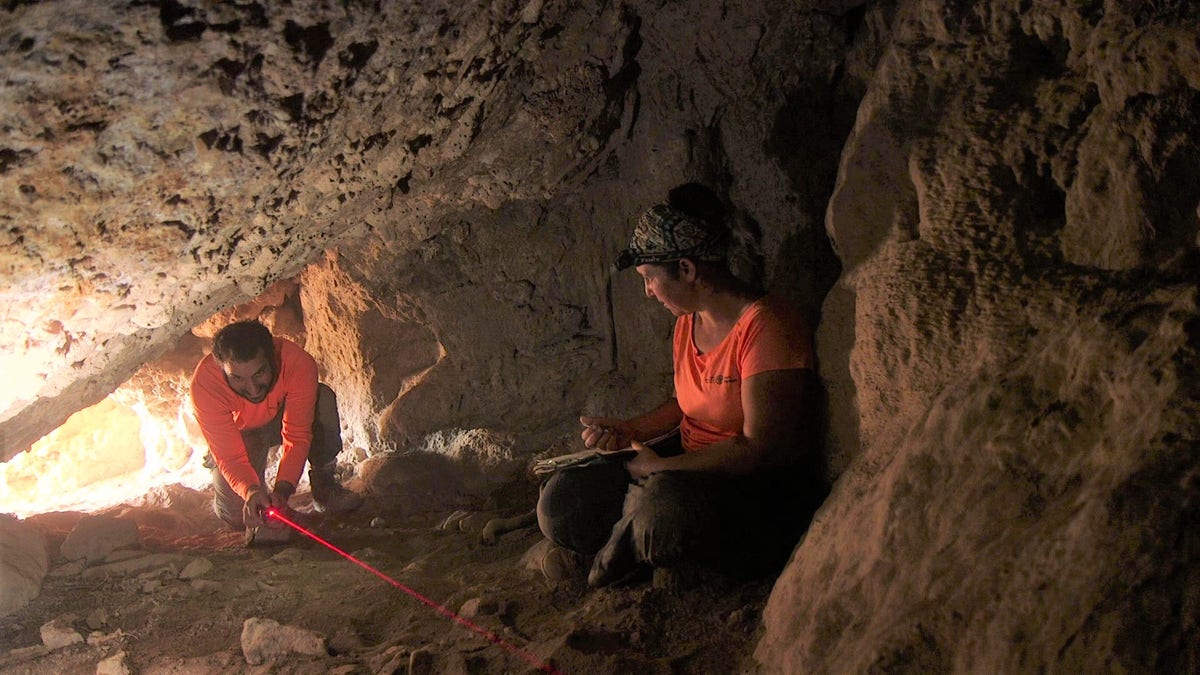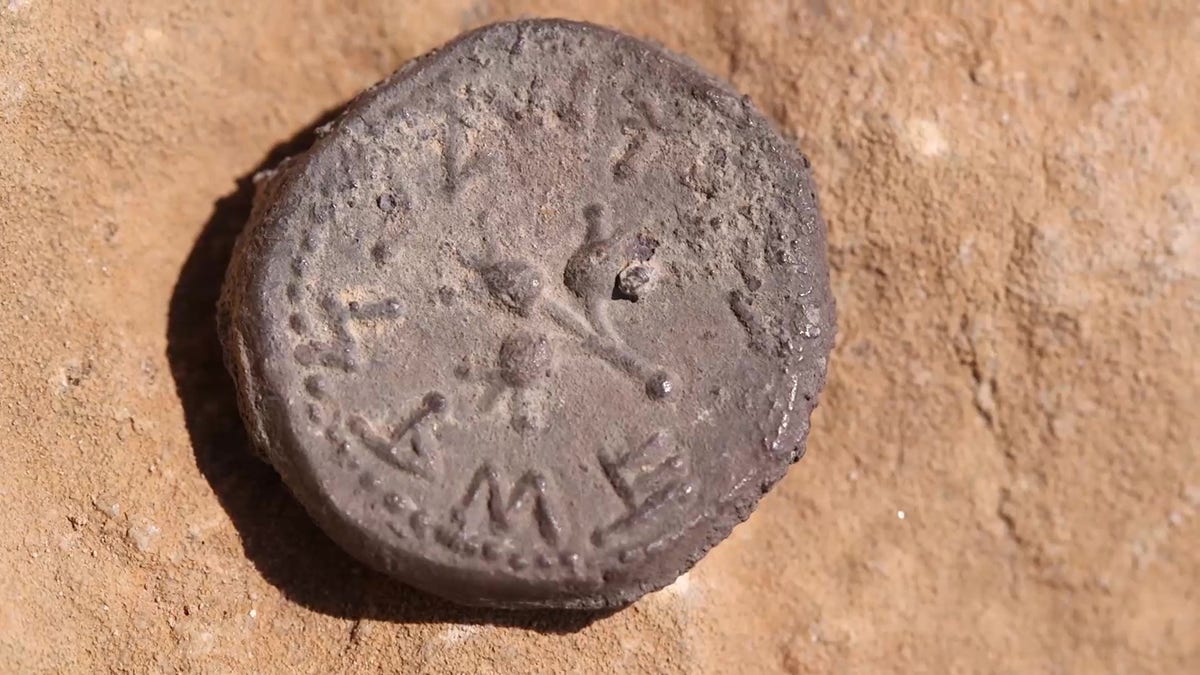Rare 2000-year-old coin found in Israel
A rare half-shekel silver coin from Year One of the First Jewish Revolt against the Romans, was discovered in the Judean Desert (Credit: Emil Aladjem, Israel Antiquities Authority)
JERUSALEM—Israel Antiquities Authority announced last week that it found a rare silver half-shekel coin from the time of the first Jewish revolt against the Romans over 2,000 years ago in the Judean desert.
The discovery electrified the Israeli media and the biblical and archeological communities due to the coin’s historical significance.
The coin was located as part of the Judean Desert Survey led by the Israel Antiquities Authority together with the Ministry of Heritage and the Staff Officer of the Civil Administration Archeology Unit in Judea and Samaria. The international community refers to Israel’s ancient biblical land as the West Bank while Israelis refer to the region by its biblical names of Judea and Samaria.
According to a press release from Israel Antiquities Authority, "These coins were minted in the values of shekel and half-shekel at the time of the First Revolt of the Jews against the Romans in Judea between the years 66–70 CE, when the Second Temple was destroyed in Jerusalem."

The Israel Antiquities Authority said the silver coin shows the obverse face with the chalice in the center, and above it the letter "Aleph" marking Year 1 of the outbreak of the revolt, and the inscription "half-shekel," the value of the coin. (Emil Aladjem, Israel Antiquities Authority.)
BIBLICAL SITE WHERE JESUS HEALED BLIND MAN EXCAVATED FOR PUBLIC VIEW: 'AFFIRMS SCRIPTURE'
The goal of the Judean Desert Survey was to retrieve artifacts before antiquity looters seized the ancient treasures.
Amir Ganor, a director of the Judean Desert Survey and Excavation Project said, "Every new find contributes to the history of the people and the country. Were it not for the survey, the coin may have been found by antiquity looters and sold on the antiquity market for the highest price offered. Over the six years of the project, we have recorded over 800 caves, and have found thousands of significant finds," noted the press release.

The Israel Antiquities Authority inspectors reached a cliff in a wadi near En Gedi, when they came across the coin on the ground at the entrance of one of the caves. (Emil Aladjem, Israel Antiquities Authority.)
The coin is dated to 66/67CE and "One explanation for this find is that the Jerusalem-minted coin fell from the pocket of a rebel who escaped to the desert during the revolt – perhaps on his way to nearby En Gedi," said Israel Antiquities Authority.
Yaniv David Levy, Israel Antiquities Authority numismatic scholar, said, "Coins from the first year of the Revolt, such as this one, are rare. During the Second Temple period, Jewish pilgrims used to pay a Temple Tax in half-shekel coins. For about two centuries, Tyrian-minted coins, made of fine silver and a status symbol in the region, were used for this contribution."
HOLY LAND FIGHT: ISRAELI LAWMAKERS CONDEMN EU'S 'ILLEGAL' ACTIONS ON BIBLICAL LAND

Israel Antiquities Authority shows Oriya Amihai and Hagai Hamer mapping the cave in the Judean Desert Survey. (Emil Aladjem, Israel Antiquities Authority.)
He added "In the course of the revolt the rebels minted alternative coins inscribed with ‘Shekel Israel,’ ‘Half-Shekel’ and ‘Quarter-Shekel.’ It seems that the rituals in the Temple continued during the revolt and these coins were now used by the rebels."
Jewish rebels at the time created a "Jewish Revolt economy" and minted their own silver and bronze coins, said Israel Antiquities Authority.
"The leaders of the Jewish Revolt chose to defy the rulers, and to mint silver coins autonomously, using the Hebrew script and without the image of the ruling Emperor. It seems that the coins were minted in Jerusalem, possibly in the Temple precinct," noted the Israel Antiquities Authority statement.
Fox News Digital previously reported that woke activism in the Middle East has emboldened the Palestinian Authority to scrub Judeo-Christian ties to Israel. The EU and the U.N. have added their weight to the Palestinian Authority Arab narrative to diminish (and negate at times) the presence of Jewish and Christian communities in the Holy Land before the founding of Islam.

The silver shekel coin after going through an intense cleaning. (Emil Aladjem, Israel Antiquities Authority.)
Ze’ev Orenstein, director of international affairs for the City of David Foundation in Jerusalem, told Fox News Digital, "This discovery highlights once again the undeniable connection of the Jewish people with Jerusalem dating back thousands of years, not simply as a matter of faith, but as a matter of fact."
Orenstein added, "This despite ongoing efforts at the United Nations and by Palestinian leadership to erase and undermine that very same heritage, with significance to hundreds of millions of Americans and billions of Christians and Jews around the world."
ISRAELI SOLDIERS DISCOVER 3,000-YEAR-OLD BIBLICAL-ERA WATCHTOWER

The 2,000-year-old coin has "Holy Jerusalem" engraved on it in ancient Hebrew, according to the Israel Antiquities Authority. (Emil Aladjem, Israel Antiquities Authority.)
Orenstein continued, "A coin such as this one, engraved in ancient Hebrew with the words 'Holy Jerusalem,' had the singular purpose of being brought to the Temple, which stood atop the Temple Mount in Jerusalem, during the Biblical Pilgrimage festivals, as recounted in the Bible."
Eli Escusido, director of the Israel Antiquities Authority, said, "The discovery of the half-shekel coin is yet another gift that the Israel Antiquities Authority bestows on the Israeli nation – first-hand evidence of a turbulent period in the history of our people 2,000 years ago, in a period of extremity and discourse that divided the nation and led to destruction."
He added, "After two millennia we have returned to our country, and Holy Jerusalem is again our capital. The find of the coin at these times, is a reminder for us of what happened in the past, teaching us the importance of working toward unity."

